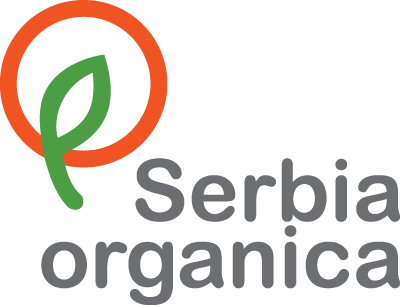
SERBIA
PLACE WHERE THE AGRICULTURE IS THE CULTURE
Serbia is a land of agriculture and the cult of food has always been an integral part of the country`s culture. With over 5.1 million ha of agricultural land, out of which 60% is arable, and perfect climate conditions blessed Serbia with a diversity of fruit and vegetable varieties, some autochthonous sorts and others simply ample to be grown on Serbian land.
Agriculture and food production in Serbia have an extensive tradition. Serbia has been producing and exporting dry plums and swine livestock to Central Europe since 1820. Serbian canned ham has been finding customers all across the USA for the last 50 years, while bovine meat especially goat, is present in Arabic countries as well as on the European markets.
The food industry is one of the strongest points of the Serbian economy. The trade balance of agricultural products is in constant surplus. IIn 2019, Serbia had a high surplus that amounted to 1.3 billion EUR, with an increase of export of 13.3% compared to 2018.
68 FOREIGN INVESTMENT PROJECT IN AGRI-FOOD WITH MORE THAN
25,353 CREATED JOBS
• R&D
16 Specialized institutes Strong support to agri-food producers from widely recognized research institutes, focused on technologically-advanced production that leads to high-quality, environmentally-friendly seeds and vegetable crop production.
• EDUCATION - 4 Universities and 26 Secondary Schools
•SAFETY STANDARDS HACCP certification is a mandatory precondition for export-oriented food processing companies, while the Government of Serbia provides various types of grants for companies to help them acquire the necessary standards.
• GMO-FREE
Huge potential for organic production with strictly prohibited production and trade of GMO food











Serbia is the World`s No.1 producer of raspberries
Fruit production is one of the key sub-sectors of Serbia`s economic development and therefore given strategic treatment by the Government of Serbia. In 2019 export of Serbian fruits amounted to 568.2 million euros.
Measured by the value of apples, in 2019 Serbia was the first exporter from Europe to the Russian Federation.
In 2019 export of frozen raspberries, blackberries, mulberries, etc. represents 31.7% of world exports placing Serbia No.1 exporter of this group of products in the world. Serbia is in the top 3 largest providers of frozen fruit to Austria, the Russian Federation, and Germany. Around 90-95% of raspberry production is intended for export, mainly frozen in bulk. This constitutes a huge potential for investors who are considering Serbia as a production facility for their final products with all kinds of different berries such as spreads, jams, toppings, ingredients for the ice-cream industry, fruit cubes for yogurt production, etc.

SERBIA’S EXPORTS REPRESENT 31.7% OF WORLD EXPORTS OF FROZEN RASPBERRIES, BLACKBERRIES, MULBERRIES, LOGANBERRIES IN 2019. WITH 148,000 TONS EXPORTED AND WITH TOTAL VALUE OF MORE THAN $250 MILLION IN 2019, SERBIA IS RANKED AS NO. 1 WORLD EXPORTER OF FROZEN BERRI
Serbia is the main supplier of SEE market
The ideal climate for vegetable production makes Serbia the main vegetable exporter and supplier of South-Eastern Europe. The most popular vegetables produced in Serbia are paprika (pepper), cabbage, tomato, and potato.
Pepper production is oriented towards pasteurized pepper in different forms: shredded, cooked, and roasted. Due to dry matter in it, the majority of red pepper is used for the production of aromatic spices, but also for preparing a traditional Serbian winter dish - “Ajvar” spread.
Besides pepper, cabbage production is second important in Serbia and it is a traditional winter dish.
In the last few years, the production of green peas and sweet corn is on the constant rise due to the increased consumption of frozen, ready-to-eat meals worldwide.

Livestock farming and meat processing in Serbia have a long tradition. The most popular meat products are fresh or smoked pork and beef, as well as poultry. At the same time, products such as pate, dry sausage of different types, hot dogs, and smoked beef and pork are widely spread through all chains of supermarkets in the Balkan region.
Serbian slaughterhouses and meat processing houses have a strong position in the CEFTA market.
Free Trade Agreement defines new quotas for duty-free export from Serbia to Turkey, pertaining to beef, sunflower oil, sunflower seeds, soybeans, animal feed, and pet food, and the quotas for export of peas, beans, green peas, sweet corn, and prunes have been increased. Serbia would be able to export, free of duty, 5.000 tons of fresh, chilled, or frozen beef thanks to the Free trade Agreement.
• 4,894 producers
• 70,349 employed (Food and Beverages Industry)
The high-quality food processing sector has potential for Serbian agriculture's further development. Whether this is processing for the price competitive brands, or small, quality-oriented processing facilities – chances for success are visible especially in the emerging markets.
At the moment more than 6,300 certificate holders put their care and dedication to work on more than 21,000 ha of the most fertile soil, growing organic cereals, fruits, vegetables, and industrial plants, among which predominant are wheat, raspberry, and sunflower.
• Export of organic products in Serbia grew by €11 mil since 2015. In 2019 Serbia exported 13,284 tonnes of organic products, with a value of €29.7 mil out of which €28.7 mil were organic fruits and fruits products.
Some of these products are made in traditional ways, using old, autochthonous breeds, generational knowledge, and a close, respectful relationship with the land. Others are innovative, made for contemporary users and markets, such as special types of virgin and cold-pressed pumpkin seed and sesame oils, frit chips, spreads made of grilled peppers, jams of wild fruits, etc.

SERBIA ORGANICA IS A NATIONAL INDEPENDENT ASSOCIATION FOR DEVELOPMENT OF ORGANIC PRODUCTION, SERVING AS A FACE OF TRUST AND COMPETENCE OF ORGANIC SERBIA AND A DATABASE OF PRODUCTS AND PRODUCERS